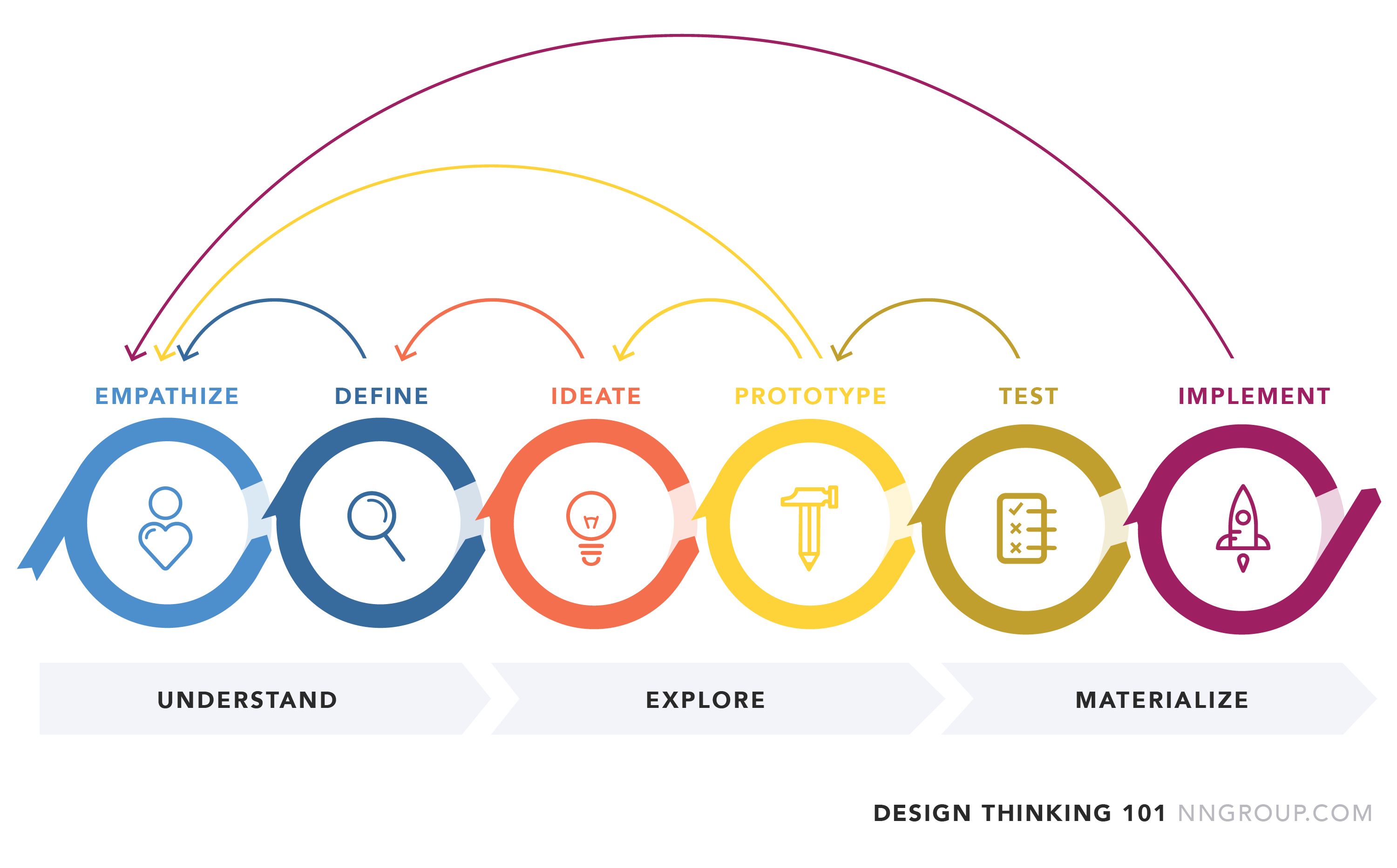1
Human - Centered Design Thinking
Human - Centered Design Thinking
Σχετικά
Human-Centered Design Thinking is a creative and collaborative approach to problem-solving that starts with people. It encourages us to deeply understand the needs, hopes, and challenges of the individuals we are working with – in this case, young people.
Rather than jumping to solutions, this method invites us to ask questions, listen, empathise, and co-create ideas that truly matter. It has five main stages: Empathise, Define, Ideate, Prototype, and Test – though they don’t always follow a strict order. Depending on the design school, these phases might be called differently. In some cases it has few more stages.

For example IDEO agency, famous for it's Human-Centred design work introduces more granular steps around the same flow: Frame a Question - Gather Inspiration - Synthesize for Action - Generate Ideas - Make Ideas Tangible - Test to Learn - Share a Story.

In youth work and non-formal education, Human-Centred Design empowers us to:
• Engage young people as partners, not just participants.
• Develop programmes, tools, and solutions that respond to real needs.
• Build creative confidence and collaborative spirit in the process.
In this activity, you’ll explore the Empathise phase – a cornerstone of human-centred thinking that helps uncover insights through listening and observation.
Read more about specific aspects of Human-centered Design thinking, focusing on the Empathise and Define phases.
Watch: Design Thinking Process in a simple animated explainer video
3. Share Your Insights
Post one insight or unexpected discovery from your empathy map.
Reflect: How did this change your understanding of the challenge? How might it influence a youth-focused solution?
Υλικό
Αποκτήστε το σήμα δραστηριότητας
Human-Centred Design Thinker Αποκτήστε αυτό το σήμα
I earned this badge by exploring the Human-Centred Design Thinking approach and practising empathy mapping to understand the needs and experiences of others. I engaged in meaningful conversations, listened deeply, and helped build a shared understanding of real challenges youth workers face. This experience strengthened my ability to approach innovation with empathy, curiosity, and reflection.
This badge is part of the KA2 Cooperation Partnership project Learn INN, supported by the European Union’s Erasmus+ programme.
Εργασίες
Αρ. Εργασίας 1
Τα στοιχεία επαληθεύτηκαν από: Ένας διαχειριστής έργου
Share one insight or moment from your ‘empathy’ phase work that helped you better understand a real need or challenge in your organisation.
(You can write your response or upload an image with a short comment.)
Δεξιότητες
ETS-TR
#Επιλογή και σχεδιασμός κατάλληλων μεθόδων συλλογής, ερμηνείας και διάδοσης πληροφοριών (δεδομένα, πόροι, ευρήματα κ.λπ.)
ETS-TR
#Κατά περίπτωση, συμπεριλαμβάνει τις ανάγκες της κοινότητας στο σχεδιασμό του προγράμματος
ESCO
#demonstrate empathy
Διοργανωτές
Awero
Badge issuer recognized with
Χρησιμοποιείται σε playlists
LearnINN Playlist - Innovation in Youth Work
AweroΔημιουργήθηκε στο Youth Work Pathways
Αλλαγή γλώσσας:

